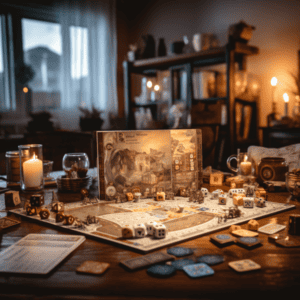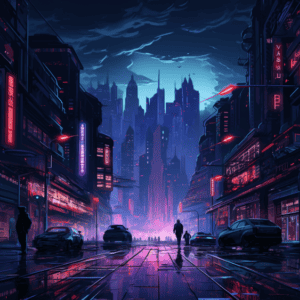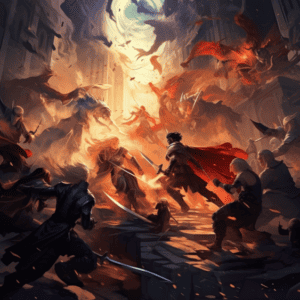Hey there, gamers! Have you ever found yourself drawn to the charming pixelated graphics and epic storylines of classic JRPGs? Well, you’re not alone.
Despite the advancements in technology that have brought us stunning 3D visuals and realistic gameplay mechanics, many players still find themselves gravitating towards the retro chic aesthetic of games like Final Fantasy VI or Chrono Trigger.
But why is this art style still relevant today? For starters, it offers a unique sense of nostalgia for those who grew up playing these beloved titles on their SNES or PlayStation consoles. The simple yet iconic character designs and colorful environments transport us back to a simpler time when gaming was all about having fun and immersing ourselves in fantastical worlds.
But beyond just invoking warm memories from our childhood, retro JRPG art also has a timeless quality that transcends generations. Its minimalist approach to storytelling allows for universal themes and archetypes that never go out of style, making it accessible to both new and old-school gamers alike.
So let’s take a closer look at why retro chic continues to captivate audiences decades after its inception.
Nostalgia And Its Effect On Gaming Trends
As I sit here, sipping on my coffee and reminiscing about the good old days of gaming, it’s hard not to get lost in nostalgia. The art style of classic JRPGs (Japanese Role-Playing Games) was a staple of our childhoods. We would spend hours upon hours glued to our screens, exploring fantastical worlds filled with magic and wonder.
Nostalgia is a powerful tool that has become increasingly prevalent in today’s entertainment industry. Gaming trends have shifted towards retro-style games as developers recognize the power of invoking fond memories from their players. Classic JRPGs are no exception; they offer an escape from reality while still providing a sense of familiarity.
This combination creates a unique experience that gamers crave – one that can’t be found anywhere else. As we delve deeper into this topic, let us explore how minimalist storytelling and timeless themes play into the relevance of classic JRPGs in modern times.
Minimalist Storytelling And Timeless Themes
One of the defining features of classic JRPGs is their minimalist storytelling. These games often had simple plots with a clear hero’s journey, but what made them stand out was how they tackled timeless themes such as love, sacrifice, and redemption. The characters were relatable and well-developed despite having limited dialogue, which allowed players to become emotionally invested in their stories.
Furthermore, the themes explored in these games are still relevant today. Even though technology has advanced significantly since the release of some of these classics, human nature remains unchanged. Players can still connect with characters who struggle with issues that resonate with us all—whether it’s overcoming personal demons or fighting for what we believe in.
In this way, minimalist storytelling allows for a deeper connection between player and character that transcends time.
The intersection of art and technology in gaming is an interesting topic to explore because it highlights how two seemingly disparate fields have come together to create immersive experiences for players worldwide. It’s fascinating how advances in technology have enabled developers to push the boundaries when it comes to creating breathtaking visuals and soundscapes while still staying true to retro-inspired art styles.
As we’ll see later on, even modern-day indie games are heavily influenced by classic JRPGs in terms of art style but incorporate new technologies that allow for more complex gameplay mechanics. This intersection between old-school aesthetics and cutting-edge tech shows just how far we’ve come from the days of pixelated sprites and 8-bit music—a testament to the enduring appeal of retro chic!
The Intersection Of Art And Technology In Gaming
As we have explored previously, minimalist storytelling and timeless themes are what makes classic JRPGs so beloved by fans even today. However, another crucial aspect that contributes to their appeal is the intersection of art and technology in gaming.
Back in those days, developers had limited resources but still managed to create visually stunning games with memorable characters and immersive worlds. The use of pixel art allowed for intricate details and vibrant colors, making the game feel like a living breathing world despite its limitations. Additionally, the music added an unforgettable emotional depth to these games – from iconic battle tracks to somber melodies that played during pivotal moments in the story.
All this contributed towards creating a unique experience that was both fun and engaging while also having artistic merit. The evolution of technology has brought about breathtaking visuals and cinematic experiences. However, there will always be something special about retro-style games which offer a different kind of immersion that modern games can’t replicate entirely.
This style allows for creativity within constraints; where developers have to work around technical limitations while still delivering something exceptional. In conclusion, it’s not just nostalgia that keeps us coming back to these games – it’s appreciation for what they represent: a time when artistic vision triumphed over technological restrictions.
Conclusion
As a retro gaming editor, I can confidently say that the art style of classic JRPGs is still relevant today.
It’s not just about nostalgia; it’s about the timeless themes and minimalist storytelling that continue to captivate players old and new.
Take for example, the recent release of Octopath Traveler. The game features stunning 2D graphics reminiscent of SNES-era RPGs, but with modern technology allowing for more vibrant colors and intricate details.
Playing through this game feels like going back in time while simultaneously experiencing something fresh and exciting.
It’s clear that the intersection of art and technology in gaming has allowed for new iterations on classic styles, creating an even stronger connection to these nostalgic games.
As gamers continue to crave meaningful stories and immersive experiences, we can expect to see more retro chic games making their way onto our screens.






